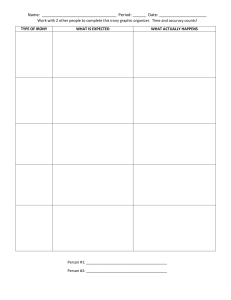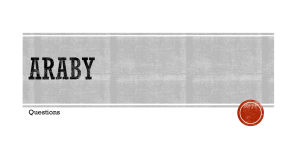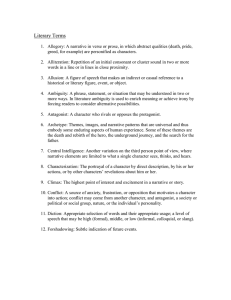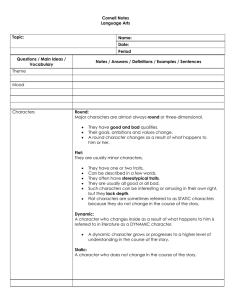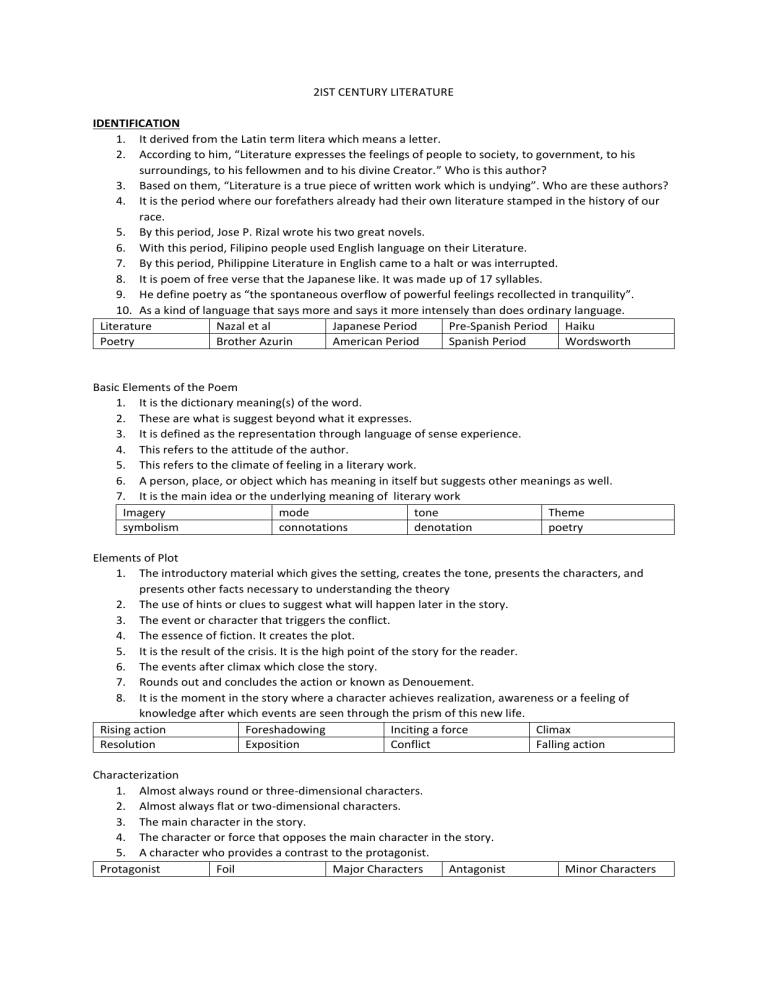
2IST CENTURY LITERATURE IDENTIFICATION 1. It derived from the Latin term litera which means a letter. 2. According to him, “Literature expresses the feelings of people to society, to government, to his surroundings, to his fellowmen and to his divine Creator.” Who is this author? 3. Based on them, “Literature is a true piece of written work which is undying”. Who are these authors? 4. It is the period where our forefathers already had their own literature stamped in the history of our race. 5. By this period, Jose P. Rizal wrote his two great novels. 6. With this period, Filipino people used English language on their Literature. 7. By this period, Philippine Literature in English came to a halt or was interrupted. 8. It is poem of free verse that the Japanese like. It was made up of 17 syllables. 9. He define poetry as “the spontaneous overflow of powerful feelings recollected in tranquility”. 10. As a kind of language that says more and says it more intensely than does ordinary language. Literature Nazal et al Japanese Period Pre-Spanish Period Haiku Poetry Brother Azurin American Period Spanish Period Wordsworth Basic Elements of the Poem 1. It is the dictionary meaning(s) of the word. 2. These are what is suggest beyond what it expresses. 3. It is defined as the representation through language of sense experience. 4. This refers to the attitude of the author. 5. This refers to the climate of feeling in a literary work. 6. A person, place, or object which has meaning in itself but suggests other meanings as well. 7. It is the main idea or the underlying meaning of literary work Imagery mode tone Theme symbolism connotations denotation poetry Elements of Plot 1. The introductory material which gives the setting, creates the tone, presents the characters, and presents other facts necessary to understanding the theory 2. The use of hints or clues to suggest what will happen later in the story. 3. The event or character that triggers the conflict. 4. The essence of fiction. It creates the plot. 5. It is the result of the crisis. It is the high point of the story for the reader. 6. The events after climax which close the story. 7. Rounds out and concludes the action or known as Denouement. 8. It is the moment in the story where a character achieves realization, awareness or a feeling of knowledge after which events are seen through the prism of this new life. Rising action Foreshadowing Inciting a force Climax Resolution Exposition Conflict Falling action Characterization 1. Almost always round or three-dimensional characters. 2. Almost always flat or two-dimensional characters. 3. The main character in the story. 4. The character or force that opposes the main character in the story. 5. A character who provides a contrast to the protagonist. Protagonist Foil Major Characters Antagonist Minor Characters Point of view 1. The narrator is an outsider who sees into the mind of one of the characters. 2. The narrator is an all-knowing outsider who can enter the minds of more than one of the characters. 3. The narrator is the character in the story who can reveal only personal thoughts and feelings and what he or she sees and is told by other characters. 4. The narrator is an outsider who can report only what he or she sees and hears. First Person Second Person Third Person Fourth Person Conflict 1. A run-in with the forces of nature. On the one hand, it expresses the insignificance of a single human life in the cosmic scheme of things. 2. It is an internal conflict where sometimes people are their own worst enemies. 3. The values and customs by which everyone else lives are being challenged. 4. Conflict that pits one person against another. Man vs. man Man vs. nature Man vs. self Man vs. society Irony 1. The contrast between what is expected or what appears to be and what is actually meant. 2. This occurs when the audience or reader knows more than the characters know. 3. This refers to happening that is the opposite of what is expected or intended. Verbal Irony Irony of Situation Dramatic Irony Figurative Language 1. An exaggerated statement used to heighten effect. It is not to mislead the reader, but to emphasize a point. 2. The use of words that mimic sounds. They appeal to our sense of hearing and they help bring a description to life. 3. A figure of speech which gives the qualities of a person to an animal, object, or an idea. 4. Repeated consonant sounds occurring at the beginning of words or within words. 5. A figure of speech which involves an implied comparison between two relkatively unlike things using a form of be. 6. A figure of speech which involves a direct comparison between two unlike things, usually with the word like or as. 7. The repetition of vowel sounds. 8. The use of the part for a whole. 9. The use of something closely related for the thing actually meant. 10. It is an apparent contradiction that is nevertheless true. 11. It is the contrast between what is expected or what appears to be and what actually is. Simile Synecdoche Metaphor Metonymy Personification Alliteration Hyperbole Paradox Onomatopoeia Assonance Irony Allusion Enumeration: 1. How we read a poem? 2. What are the questions that we need to ask? 3. Four ways in which an author can express themes.

